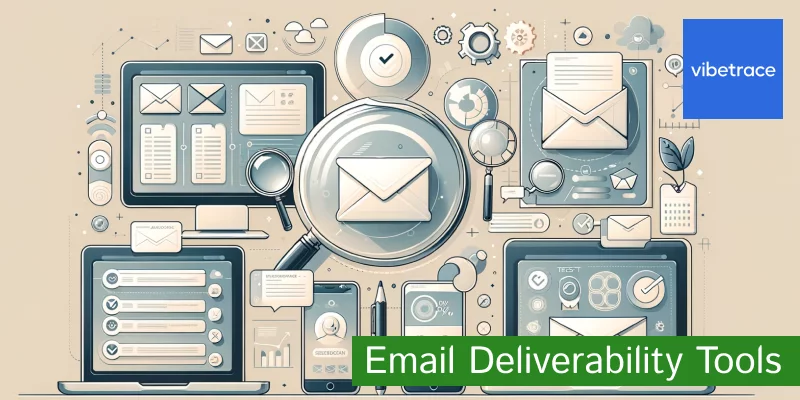Part of our checklist for sending a newsletter is to check and test emails before sending.
Because you want to be relevant and land in Inboxes, Not Spam: Spam filters are picky.
Testing helps identify elements that might trigger them, keeping your emails out of the junk folder.
Email testing tools go beyond basic proofreading. Here’s how they can supercharge your campaigns:
- Deliverability Testing: These tools analyze your email content and structure to predict how spam filters will react. This can significantly improve the chances of your email reaching inboxes. (we’ll only focus on this information in current article)
- Device Previews: See how your email looks on desktops, tablets, and smartphones. This ensures optimal formatting and readability across all devices, leading to higher engagement.
We’re going to cover in this article top 3 email testing tools from a deliverability point of view.
The Need for Email Testing
You’re absolutely right, email campaigns are susceptible to a number of issues that can significantly impact their effectiveness. Here are some of the most common problems encountered:
Deliverability Issues:
- Spam Flags: This is a major concern. Emails can be flagged as spam due to various factors, including:
- Spammy Content: Using excessive exclamation points, ALL CAPS, misleading subject lines, or irrelevant keywords can trigger spam filters.
- Poor Sender Reputation: If your domain or IP address has a history of sending spam, your emails are more likely to be flagged.
- Domain Authentication: Not implementing email authentication protocols like SPF, DKIM, and DMARC can make your emails look suspicious.
Content and Design Issues:
- Formatting Errors: Inconsistent formatting, broken layouts, or images not displaying properly can create a negative user experience.
- Broken Links: Including links that lead to error pages or irrelevant content undermines your credibility and frustrates recipients.
You need to be aware of these common issues and taking steps to avoid them, in order to create effective email campaigns that reach inboxes, get seen, and drive results.
To learn more about how to improve your email campaigns, you must read the following article.
Not taking care of those and you risk of having your email landing into spam. That’s wasted money.
Unveiling the Magic: How Email Testing Tools Work
These tools simulate the recipient’s experience by analyzing various aspects of your email before you hit send. Here’s a breakdown of their inner workings:
- Sending a Test Email to a special address
There systems automatically generate an unique email address where you will need to send your email content, like it is a real recipient.
Instead of sending to a recipient email address, you send it (before, yes before the scheduled delivery) to this email address. That’s how they receive their data and know what issues you can solve.
2. Analysis breakdown
Once you send the test email, the tool dissects it and provides a comprehensive analysis, typically covering the following aspects:pen_spark
- Spam Score: This is a numerical score (often between 0-100) that indicates the likelihood of your email being flagged as spam. The tool analyzes various factors like content, formatting, and sender reputation to generate this score. A lower score signifies a reduced chance of ending up in spam. Many tools offer suggestions for improving your score, such as removing spam trigger words or using a more reputable sender address.
- HTML/CSS Validation: The tool checks your email’s code for any errors or inconsistencies that could lead to rendering issues across different email clients (Gmail, Outlook, Yahoo). This ensures your email displays correctly regardless of the recipient’s platform. Common issues detected might include missing closing tags, unsupported CSS properties, or invalid image paths.
- Link Functionality: The tool verifies that all links within your email are functional and lead to the intended destination. Broken links can frustrate recipients and damage your credibility. Some tools might even perform a deeper analysis, checking if the linked websites are currently online.
- Image Rendering: The tool checks if all images embedded within your email are displayed correctly. It may also analyze image size and file format to ensure optimal loading times.
- Mobile Responsiveness: Many tools assess how your email looks and functions on various mobile devices. This is crucial, as a significant portion of users check emails on their phones.
- Accessibility: Advanced tools might even analyze your email for accessibility concerns, ensuring it’s readable by users with disabilities (e.g., proper color contrast, alt text for images, clear font sizes).
Some of those tools also offer InboxPreview, but this is out of scope for current article
Want to be up to date with Marketing?
Subscribe to our Retail CX newsletter!

Stay connected with what’s really important to optimize your digital revenues.
By clicking the button, you accept our Terms & Conditions. Also you will need to confirm your email address.
Top Email Testing Tools
We currently have tested 3 such solutions, which are all free of charge if you use them using their web interface.
- mail-tester.com
- mailgenius.com
- smtpserver.com
Mail-tester.com
Mail-tester is a widely known solution to test the “spammyness” of your emails. It provides with a very simple interface that offers you a custom and unique email address to send your emails to.
This comes in the form of @srv1.mail-tester.com
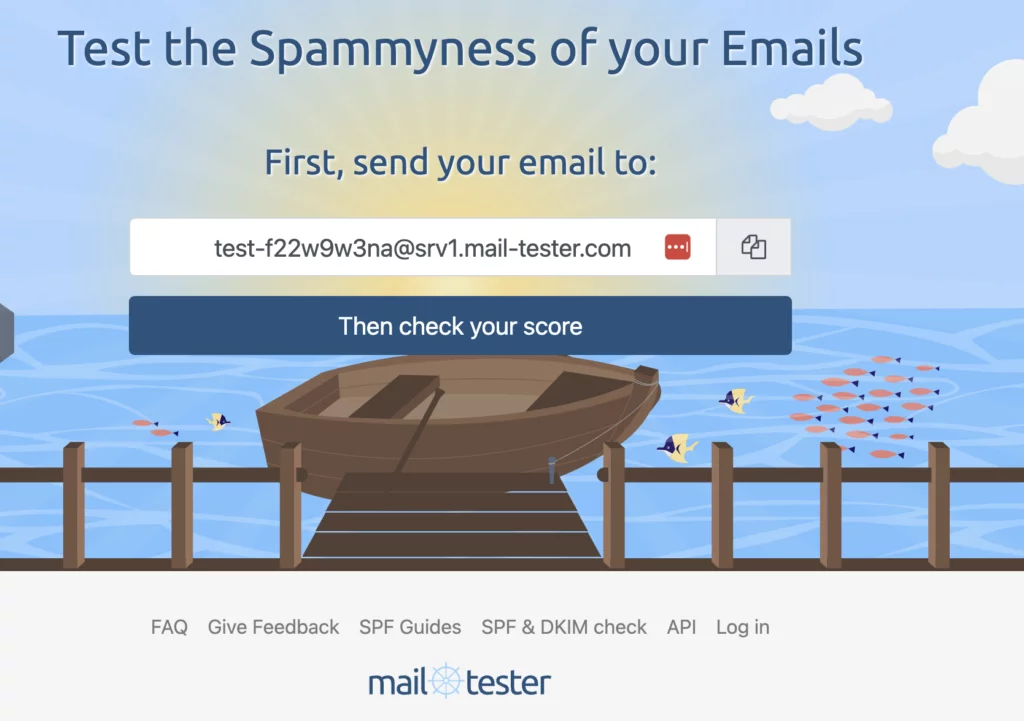
Mail-Tester is a multi language solution to test your emails. Currently it’s provided in the following languages:

You can also use Mail-tester for SPF & DKIM check as well as learn how to setup your SPF by providing with guides for almost any Hosting platform on the market.
If you are a develop or required integration of such tester within a software solution, they also provide an API, with a simple cost, based on the number of tests
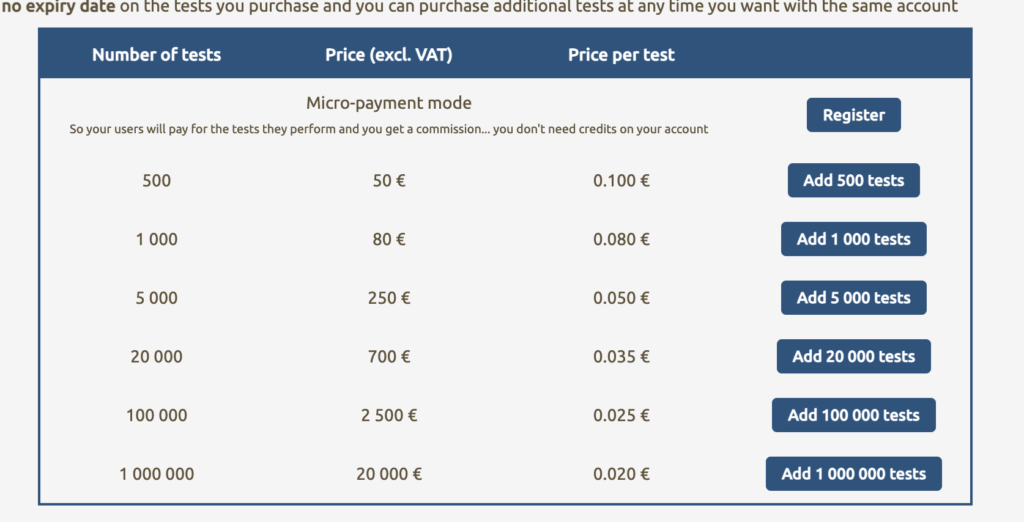
- Tool 2: Features, benefits, and ideal use case
- Tool 3: Features, benefits, and ideal use case
- Comparison of key features and pricing models
Step-by-Step Guide to Using Email Testing Tools
- Selecting the right tool for your needs
- Preparing your email for testing
- Understanding the reports and feedback
- Making adjustments based on insights
Best Practices for Email Campaign Testing
- Regular testing for different email campaigns
- Incorporating A/B testing
- Keeping an eye on deliverability metrics over time
- Staying updated with email marketing standards and ISP regulations
Testing a real newsletter (promotional email)
Here’s a real case study. We wanted to test a newsletter sent by campmor.com.

Results with Mail-Tester
With Mail-tester this email content scored 5.8 out of 10. The biggest issues found are related to Spamassassin
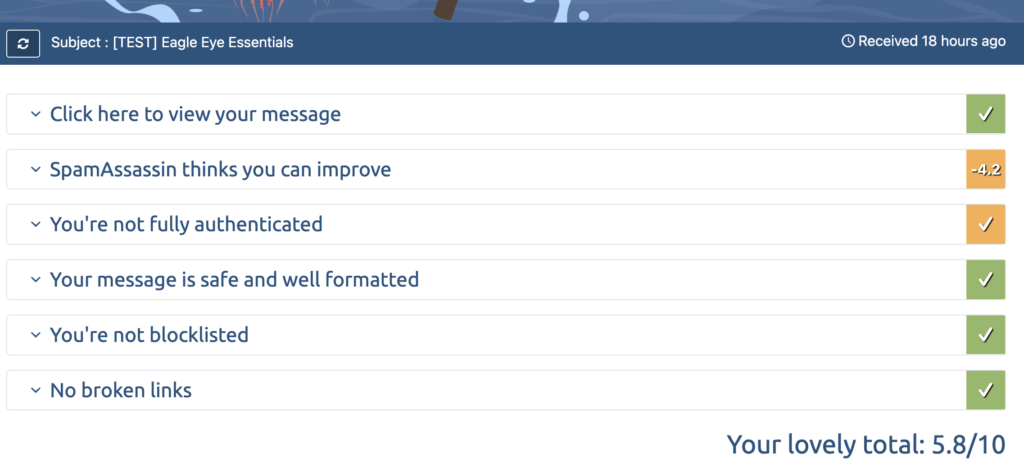
Most important mentioned issues are related to Razor2.
Razor, also known as Vipul’s Razor, is a distributed, collaborative spam detection and filtering network. Its purpose is to identify and catalog spam signatures across the internet, which can then be used by email servers and clients to filter out unwanted messages. Razor works by allowing users to report spam, which is then analyzed and added to a global database of spam indicators. This database is accessed by email systems to check incoming messages for characteristics common to known spam, helping to improve the accuracy of spam filters.
Razor is considered an important tool in the fight against spam because it:
- Leverages collective reporting: By allowing users and administrators to report spam, it continuously updates its database with new spam signatures.
- Increases filter accuracy: By using a distributed network to identify spam, Razor helps email systems better distinguish between spam and legitimate emails.
- Works with other filters: Razor is often used in conjunction with other spam filtering techniques, enhancing overall spam detection capabilities.
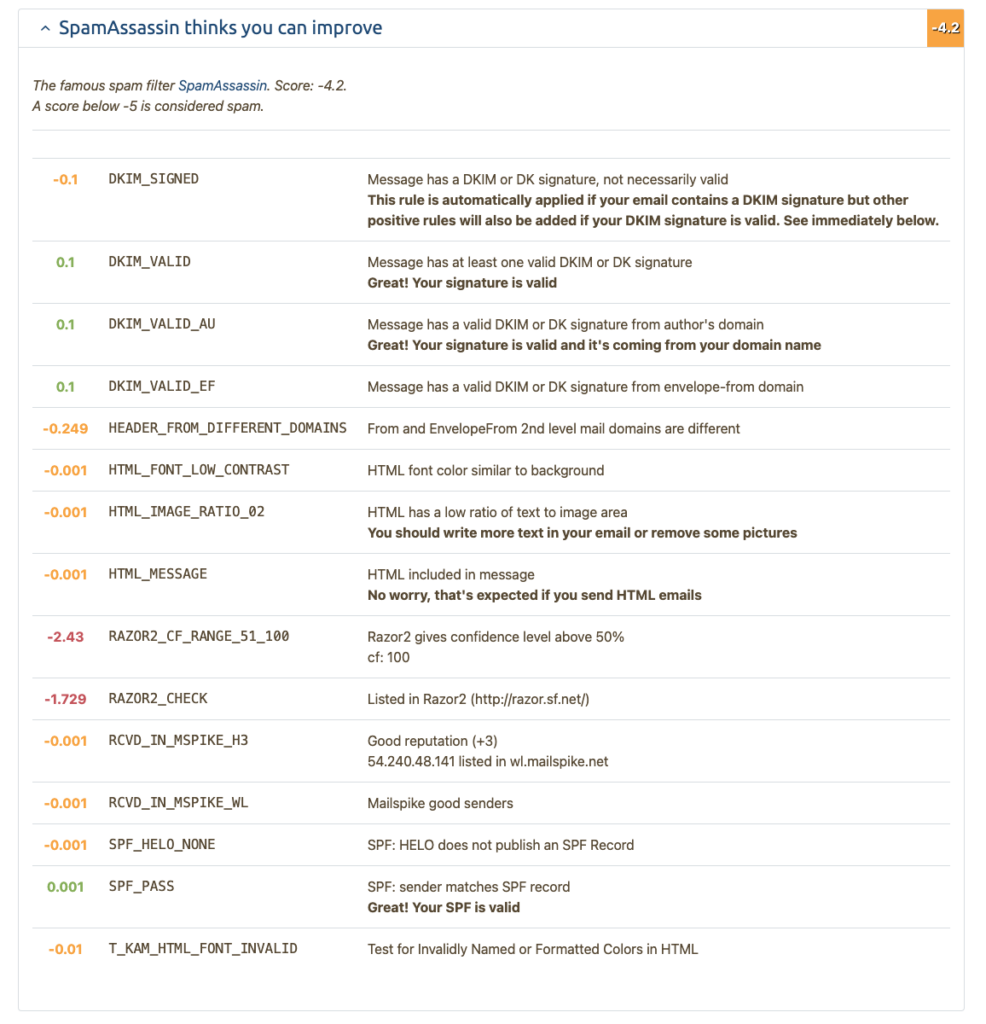
Results with Mailgenius
Mailgenius scored this email 76 out of 100.
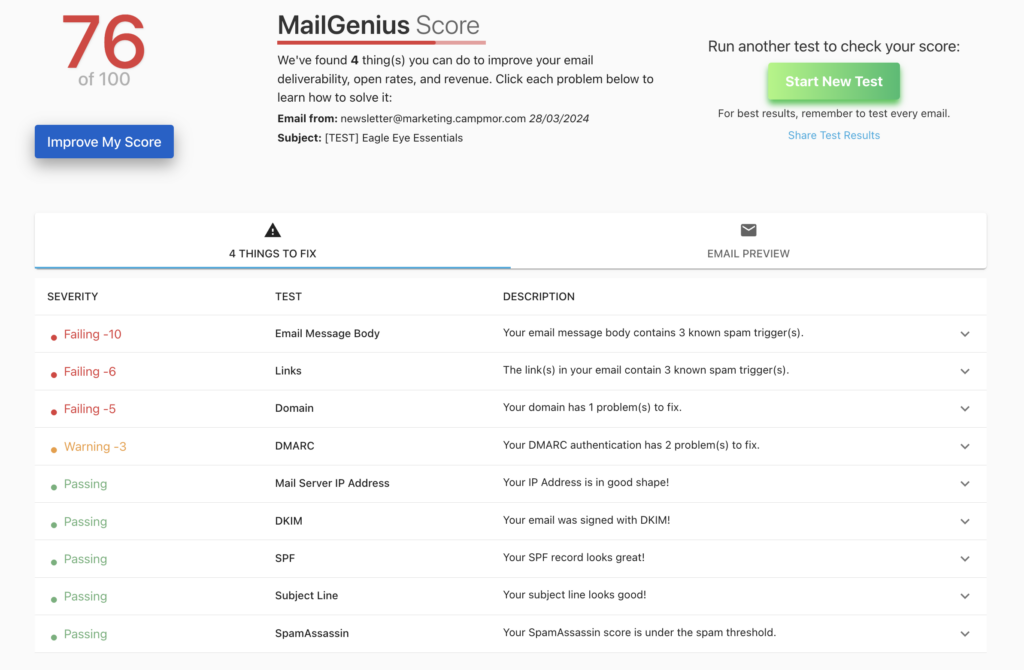
What did Mailgenius mentioned:
- we should be using a custom domains. So this is an error from mailgenius as we are currently using one and it’s authenticated
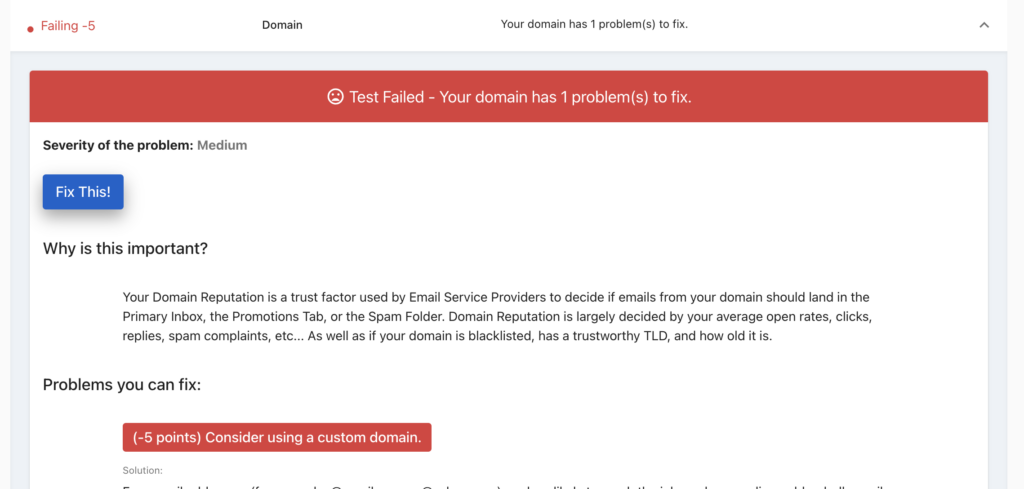
Problems mentioned by mailgenius related to links:
- we-re using too many links (49)
- one of the links is blacklisted by dnsbl-3.uceprotect.net
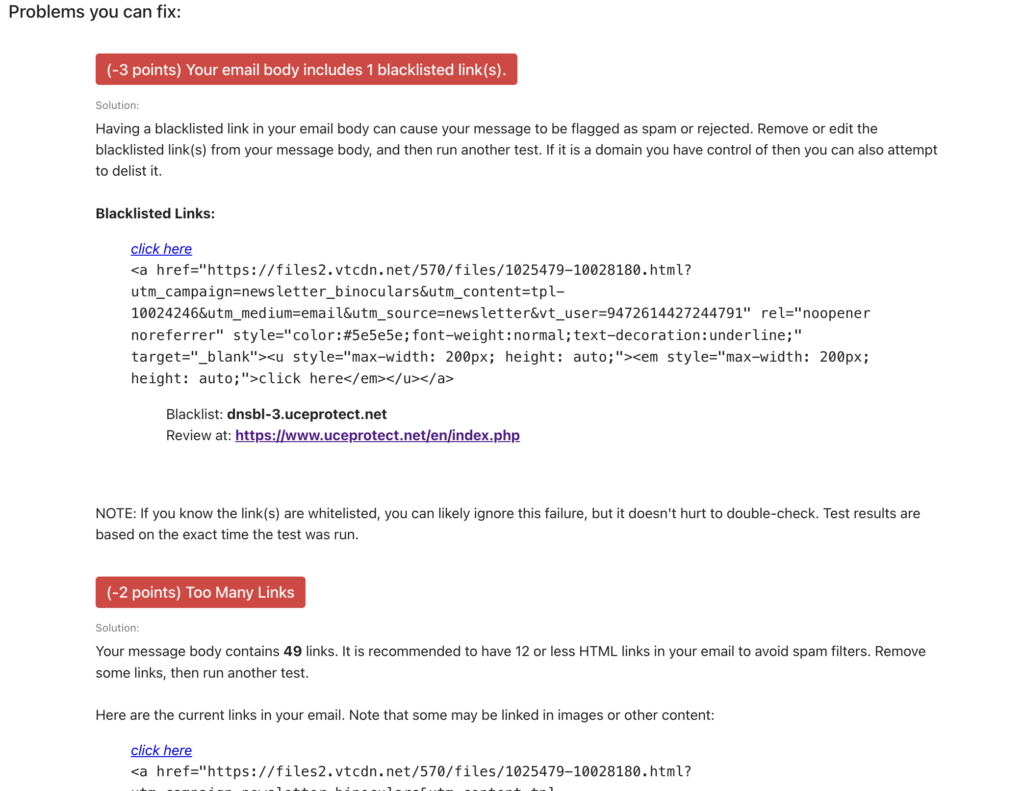
Mailgenius mentioned about content:
- using spammy words (FREE, but, limited time). Click here to view a big list of spammy words
- low text to image ratio. We should be using more text in emails.
- poorly formatted fonts.
Your message has been flagged for using font that is too big, or font color too similar to the background. Use natural font sizes and colors, and then run another test. If this test result doesn’t seem correct, SpamAssassin may be having issues right now.
Results with SMTPserver
SMTP server considers this email should go to spam right away
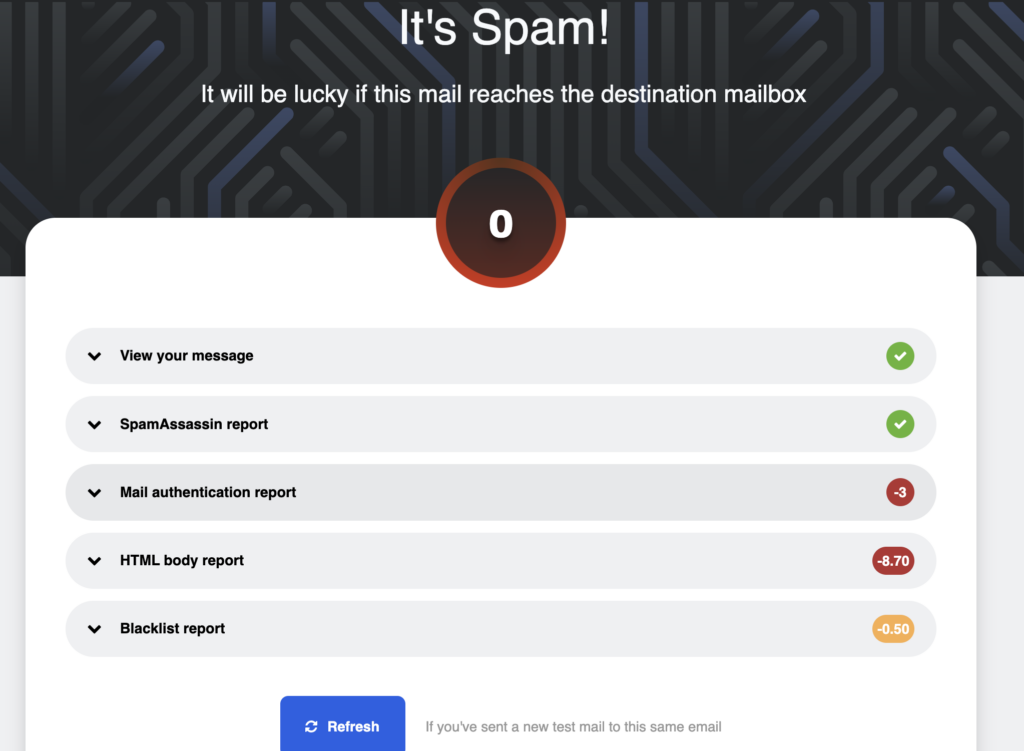
The main problems that SMTPserver is mentioning are related to:
- authentication. DKIM signature is mentioned as invalid
- authentication. Missing DMARC record
- html content: too much html and wrong format
- html content: bad links
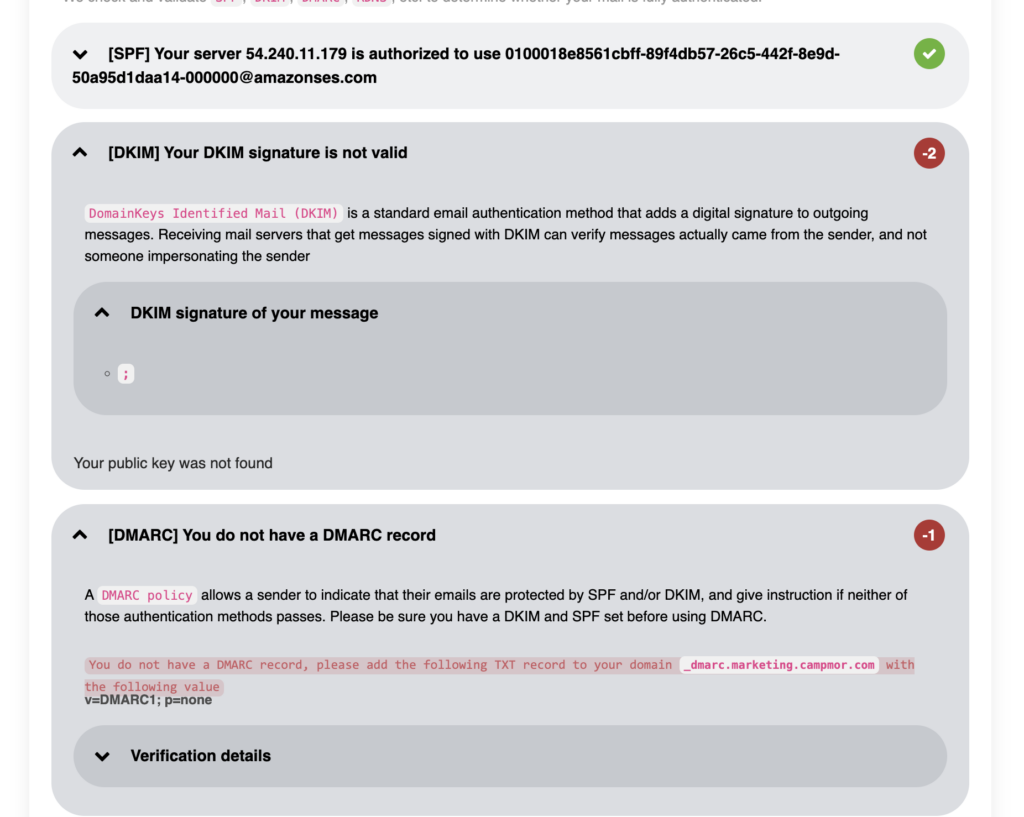
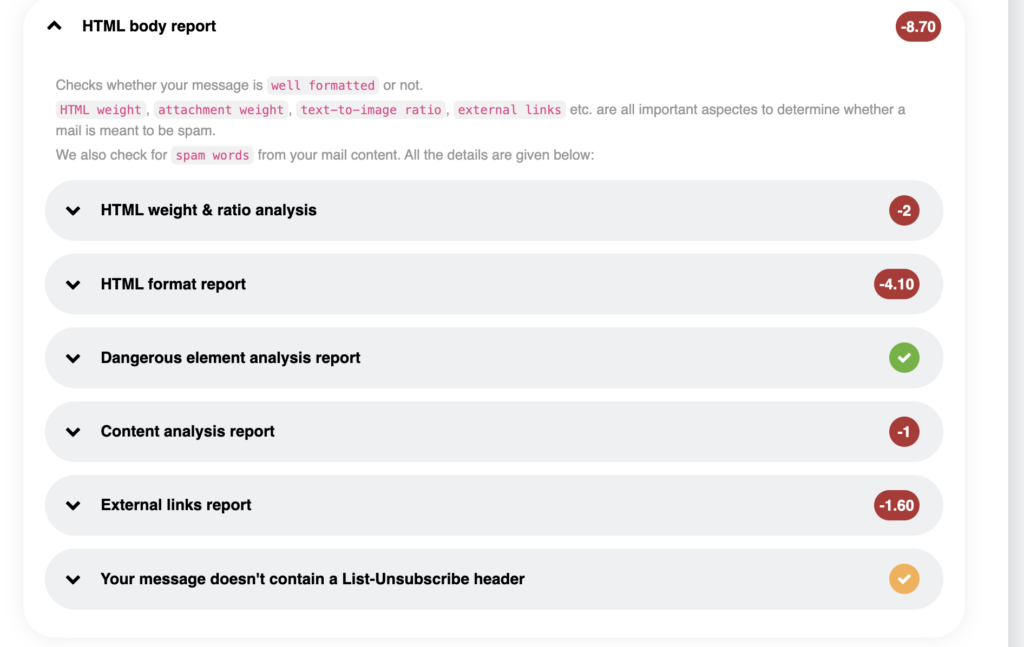
Now, what is worth mentioning:
- they are wrong about list-unsubscribe header (this header is correctly set, as it’s visible to the other 2 testing solutions
- they are wrong about authentication (DMARC and DKIM are valid)
Regarding html content

